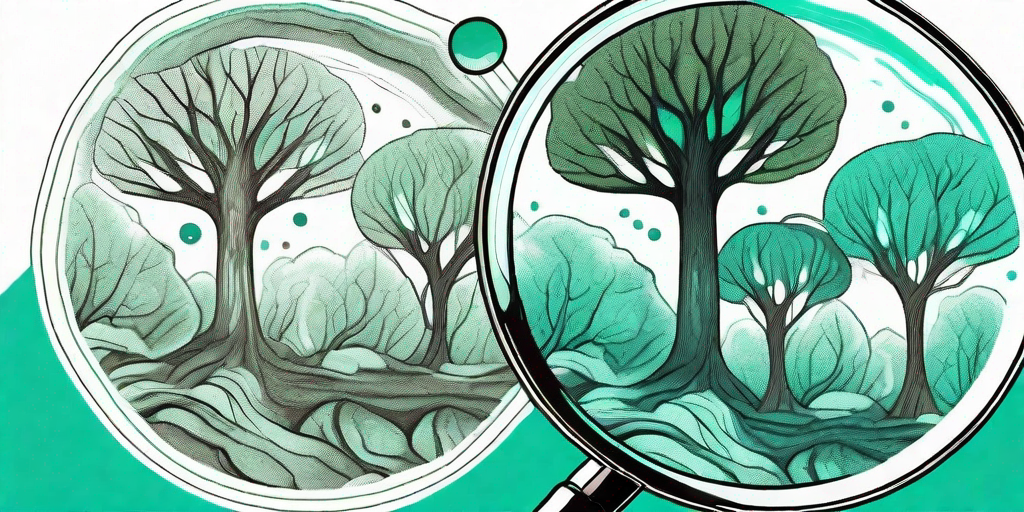
Welcome to the fascinating world of tree bark fungus! If you're a nature enthusiast, a budding mycologist, or simply someone who's curious about the odd-looking growth on your backyard tree, you've come to the right place. Let's dive into the nitty-gritty of identifying tree bark fungus, and who knows, you might just become the Sherlock Holmes of the fungal world!
Understanding the Basics of Fungus
Before we delve into the specifics of tree bark fungus, let's get acquainted with the basics. Fungi, in the simplest terms, are a group of organisms that include yeasts, molds, and mushrooms. They are not plants, and they have their own kingdom in the biological classification. Now, isn't that something?
Fungi play a crucial role in the ecosystem. They are nature's decomposers, breaking down dead organic material and recycling nutrients back into the soil. However, some fungi can also be harmful, causing diseases in plants and trees. This is where our focus lies today.
What is Tree Bark Fungus?
Tree bark fungus refers to any fungus that grows on the bark of trees. It can appear in various forms, from shelf-like structures to powdery growths. Some are harmless, while others can cause severe damage to the tree's health.
Identifying tree bark fungus is not just about knowing your fungi. It's about understanding the tree, its environment, and the signs of fungal infection. It's a bit like being a tree doctor, diagnosing the problem based on symptoms and context. Exciting, isn't it?
How to Identify Tree Bark Fungus
Now that we've covered the basics, let's get down to business. Identifying tree bark fungus can be a bit tricky, but with a keen eye and a bit of knowledge, you can do it like a pro. Here's how:
Step 1: Observe the Fungus
The first step in identifying tree bark fungus is to observe its physical characteristics. Look at the color, shape, size, and texture. Is it powdery or slimy? Is it flat or raised? These details can give you clues about the type of fungus.
For instance, a common tree bark fungus is the shelf or bracket fungus, which forms shelf-like structures on the tree bark. It can be of various colors, from white to brown to black. Another common type is the powdery mildew, which appears as a white or gray powdery growth on the bark.
Step 2: Examine the Tree
The next step is to examine the tree itself. What type of tree is it? Certain types of fungi prefer certain types of trees. For instance, the honey fungus often infects oak, birch, and fruit trees.
Also, look at the overall health of the tree. Are the leaves yellowing or wilting? Are there other signs of disease? These could indicate a fungal infection.
Step 3: Consider the Environment
The environment can also provide clues about the type of fungus. Some fungi thrive in damp, shady areas, while others prefer sunny, dry conditions. The presence of other plants, insects, and animals can also affect the types of fungi that grow on a tree.
For instance, the artist's conk fungus often grows on dead or dying hardwood trees in shady, moist areas. On the other hand, the dryad's saddle fungus prefers living hardwood trees in sunny, dry conditions.
Auxiliary Details
Common Types of Tree Bark Fungus
There are thousands of species of fungi, but here are a few common types of tree bark fungus that you might encounter:
- Shelf or Bracket Fungus: These fungi form shelf-like structures on tree bark. They can be of various colors and sizes.
- Powdery Mildew: This fungus appears as a white or gray powdery growth on the bark.
- Honey Fungus: This fungus often forms honey-colored mushrooms at the base of trees.
- Artist's Conk: This fungus forms large, flat, brown structures on tree bark. It's called "artist's conk" because you can etch designs on its underside, which then darken and become permanent.
- Dryad's Saddle: This fungus forms large, fan-shaped structures on tree bark. It's edible and has a smell reminiscent of watermelon rind.
Dealing with Tree Bark Fungus
If you find fungus on your tree, don't panic. Not all fungi are harmful. Some are even beneficial, helping to decompose dead wood and recycle nutrients.
However, if the tree shows signs of disease, it's best to consult a professional arborist. They can diagnose the problem and recommend the best course of action. Remember, prevention is better than cure. Regularly inspect your trees for signs of disease and take action at the first sign of trouble.
Frequently Asked Questions
Is all tree bark fungus harmful?
No, not all tree bark fungus is harmful. Some are beneficial, helping to decompose dead wood and recycle nutrients. However, some fungi can cause diseases in trees.
How can I prevent tree bark fungus?
Regular inspection and proper tree care can help prevent fungal infections. This includes watering properly, pruning dead branches, and maintaining a healthy soil environment.
What should I do if I find harmful fungus on my tree?
If you find harmful fungus on your tree, it's best to consult a professional arborist. They can diagnose the problem and recommend the best course of action.
So there you have it, folks! You're now well-equipped to identify tree bark fungus like a pro. Remember, it's all about observation, knowledge, and a bit of detective work. Happy fungus hunting!















